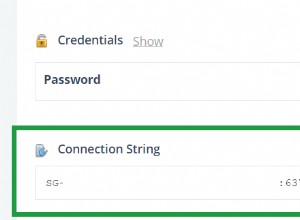Wprowadzenie
API e-commerce stworzone z użyciem maszynopisu, ekspresu, PostgreSQL, Redis i Kafki ze wszystkimi podstawowymi funkcjami i nie tylko !!
Kod źródłowy - https://github.com/leoantony72/E-commerce-Api
Zmienne środowiskowe
PORT = 4000
DB_USER = PGUSER
DB_PASSWORD = PGPASSWORD
DB_HOST = postgresdb
DB_PORT = 5432
DB_DATABASE = e_commerce
SESSION_SECRET = Session Secret
SESSION_MAXAGE = 3600000 * 60 * 10
GMAIL_USER = email // eg:(test123)
GMAIL_PASS = Gmail password
STRIPE_PUBLIC_KEY = Stripe public Key
STRIPE_SECRET_KEY = Stripe Private Key
Kompilacja Dockera
docker-compose up // in the root dir
Skonfiguruj Postgres, Redis i Kafkę
⭕*Postgres *
docker exec -it postgresdb psql -U username -W e_commerce
Skopiuj i wklej plik db.sql z db_model
⭕*Ponowne *
docker exec -it redis-e-commerce bash -c redis-cli
wklej to polecenie
BF.RESERVE usernames 0.00001 10000
⭕Kafka
docker exec -it broker bash
kafka-topics --create --bootstrap-server localhost:9092 --replication-factor 1 --partitions 1 --topic orders
Dzięki temu nasza konfiguracja jest zakończona, wszystkie trasy Api są
1. /api/store GET Access the Store
2. /api/auth/register POST Register a User
3. /api/auth/login POST Login A user
4. /api/auth/logout POST Logout A User
5. /api/auth/forgotpassword POST Req For Password Reset
6. /api/auth/reset-password/ POST Resets The Password
7. /api/verify GET Verify The Email
8. /api/admin/product POST Insert A Product
9. /api/admin/product/:id PUT Update Product
10. /api/admin/product/:id DELETE Delete A Product
11. /api/admin/stock/:id PUT Update Stock
12. /api/admin/discount/:pid GET Get Discount of a Product
13. /api/admin/add_discount/:id POST Add Discount to a product
14. /api/admin/activate/:id GET Activate Discount
15. /api/manager/orders GET Gets Order
16. /api/manager/order/:orderid GET Get Individual Order Detailes
17. /api/shipper/updateorder/:oid POST Sents Confirm Order Request
18. /api/order/confirmdelivery POST User Confirms Delivery
19. /api/products GET Get Products
20. /api/products/:pid GET Get Individual product
21. /api/checkusername POST Checks If Username is Taken
22. /api/ratings/:pid GET Get Rating
23. /api/ratings/:pid POST Add Rating To Product
24. /api/ratings/:pid PUT Update Rating
25. /api/ratings/:pid DELETE Delete Rating
26. /api/cart GET Get Cart Items
27. /api/addItem/:pid POST Add Item To Cart
28. /api/removeItem/:pid DELETE DEL Item In Cart
29. /api/purchase POST Purachse Item
30. /api/userAddress POST Add User Address
31. /api/userAddress DELETE DEL User Address
32. /api/userAddress PUT Update User Address
Więcej szczegółów na temat tras znajduje się w dokumentacji 👉
Kod źródłowy :https://github.com/leoantony72/E-commerce-Api
Dziękuję za poświęcony czas...😁




